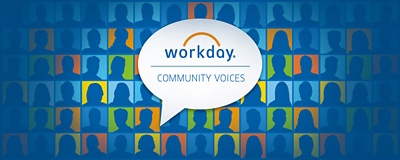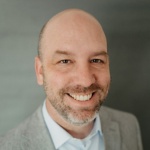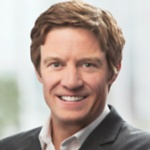As the fourth-largest market research organisation in the world, GfK supports more than 9,000 employees across 60 countries. In 2015, GfK decided to replace its core HR system and more than 60 disparate systems with a single, integrated solution. The decision was based on the need to reduce the complexity of multiple HR systems and increase data quality and the transparency of information across the business.
When it comes to transforming HR, there are many factors which influence whether an organization should take a staggered approach to replacing technology and processes, or if they should go for the so-called “big-bang” and address all areas across the function at once.
Lynda Taumann-Yrisarry, VP, HR services and digital solutions, GfK, is responsible for the management of all HR and payroll processes; she is not a fan of a phased deployment approach and instead made a strong business case for simultaneously transforming as many elements of HR as possible.
“We were aggressive. We wanted to go live with everything Workday had to offer. From Workday Human Capital Management, through to the tools that would allow us to manage recruitment, compensation, benefits and how we think about talent management,” said Taumann-Yrisarry. “This approach would allow us to remove a lot of the coordination and administration, such as data cleansing, from the end of the process and deal with everything at the start.”
“I think what sets large Workday deployments apart from the smaller ones is the higher complexity and the mostly international orientation of the implementing companies,” said Taumann-Yrisarry. “That’s why Workday has its own proven deployment method and process framework for large projects. This makes the “big-bang” approach possible, as we experienced at GfK.”
Single Source of Truth for Resource Planning
GfK’s multitude of legacy systems, mostly locally-configured solutions and processes, offered very little data transparency, and no visibility into key data, such as full-time equivalent (FTE) employment figures. This information was contained in a separate finance system, not by HR, which required the involvement of finance in uncovering this data. With Workday, however, employee data is kept in a single system. Each employee maintains their own data — as promptly and accurately as possible. This ensures that information is not only up-to-date, but also accessible across the business in real-time.
“Workday is our single source of truth when it comes to FTE reporting, and finance and control see it that way too,” said Taumann-Yrisarry. “Agility and planning should not contradict one another. Organizational agility should be the prerequisite for meaningful planning.”
Automation Facilitates Change
Due to the scale of GfK’s global operations in 60 countries, one of Taumann-Yrisarry’s key tasks is to manage people data across three shared services hubs to achieve maximum efficiency. The deployment of Workday has allowed the business to automate many of its people processes across the shared hubs, as well as supporting changes to GfK’s operational structure in real-time.
“As a business, we are experiencing constant change. From acquisitions, diversification, sell-offs, and spin-offs, changes to our organisational structure happen frequently. With Workday, the processes which underpin these changes can happen very quickly and on one system. That information is then automatically updated on other systems, which means our HR teams can focus on more complex and strategic HR tasks which benefits our business,” said Taumann-Yrisarry.
Standard Processes Out-of-the-Box
Despite making the decision to overhaul the vast majority of its HR systems, GfK was able to complete the global deployment of Workday in just ten months. This was made possible, in part, due to Workday’s standard out-of-the-box business process configurations, which simplified deployment.
Taumann-Yrisarry and her team integrated more than 50 payroll systems and embarked on a seven-week data cleanse in preparation for the deployment, which she describes as a crucial step before rolling out the new technology.
“Having good quality data is the foundation as you want the business to trust the information and have confidence in the decisions they are making. Spending the time on data cleansing is absolutely vital if you want to avoid inconsistencies further down the line,” said Taumann-Yrisarry.
Key Factors for Success
Under the new process, HR services report directly to Taumann-Yrisarry globally rather than into their respective countries. This centralised approach allows the business to provide more-focused HR services and opportunities to all regions–something that could not be delivered previously.
“There is only one global cost centre, and the employees report under the same structure. Having one worldwide focus allows HR services to centrally collect and review employee requirements and make decisions across the entire workforce,” said Taumann-Yrisarry.
Future Innovation: Payroll and Planning
GfK has now captured HR data from 60 countries centrally, which for the first time provides the business with a quick and transparent view of its global workforce. This foundation is the basis for future strategic HR projects. Taumann-Yrisarry’s team is focused on the company’s payroll engine. All 60 countries are being integrated into a third-party processing system. Personnel costs can then be centrally recorded and transferred to Workday as the master system of record.
Business planning is also high on the agenda, and GfK will soon be implementing Workday’s Adaptive Insights Business Planning Cloud planning and analysis tool.
“Not only will we be able to integrate all the costs from our personnel environment, but we will also have a reliable basis for our plans,” says Taumann-Yrisarry. “We know how quickly things can change in our business, so it’s important that we have a flexible planning tool that can move with the speed of our organisation. Having the agility to plan and re-plan is hugely important to our leaders as we look to stay ahead of our competitions.”






